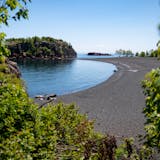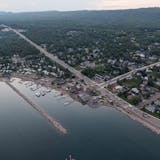Minnehaha Creek has long been treated like a glorified drainage ditch as it flows downstream from Lake Minnetonka through south Minneapolis, dumping street runoff into the Mississippi River. A new partnership seeks to redefine the creek’s relationship with the people who live along its banks and play in the lakes fed by its polluted water.
Modeled after the 1991 Clean Water Partnership that introduced water quality monitoring to the Minneapolis Chain of Lakes, the new agreement brings together the city of Minneapolis, Park Board and Minnehaha Creek Watershed District. It proposes engineering curves back into the artificially straightened Minnehaha Creek, and three stormwater treatment projects targeted at the densest underground pipe systems in south Minneapolis.
The ultimate agenda: clean up Lake Hiawatha and pull it off the state’s impaired waters list, where it has languished for 22 years.
“We’ve experienced the extremes of drought and flooding and we know that they are getting more extreme,” said James Wisker, district administrator of the Minnehaha Creek Watershed District. “It’s taxed our infrastructure and damaged our natural systems. It’s also brought attention to old land use decisions that are still impacting us today, like the historic filling of our region’s wetlands to make way for growth and development.”
Residents have expressed concerns about the sustainability of the city’s residential and recreational environment. Water problems have increasingly interfered with the quality of life in south Minneapolis, with basements flooding when it storms and high levels of E. coli cutting beach season short.
The Minnehaha Creek watershed covers 178 square miles of the metro, encompassing 29 communities of Hennepin and Carver counties and 120 lakes and streams including Lake Minnetonka. Everyone who lives in the watershed pays taxes to the watershed district, which is responsible for managing the water’s health.
The biggest obstacle to the district’s work is their inability to control what happens on land. Nevertheless, litter, dirty runoff and the loss of land to development affect water. So over the past decade, the watershed district spent heavily on co-developing new parks, nature preserves and even housing complexes with stormwater treatment features in Edina, St. Louis Park and Hopkins.
Those efforts have reduced pollutants that flow down toward Minneapolis, but to date none of the projects have actually been located along the city’s segment of the creek. A earlier memorandum of understanding between the city, Park Board and watershed district, signed in 2018, expired last year without any work being done. This year’s new agreement recommits the agencies to addressing the city’s water problems together.


